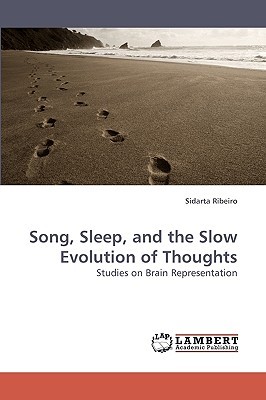
- We will send in 10–14 business days.
- Author: Sidarta Ribeiro
- Publisher: LAP Lambert Academic Publishing
- Year: 2009
- Pages: 220
- ISBN-10: 383831803X
- ISBN-13: 9783838318035
- Format: 15.2 x 22.9 x 1.3 cm, softcover
- Language: English
- SAVE -10% with code: EXTRA
Reviews
Description
How do brains learn? Expression of a plasticity-related immediate early gene (IEG) was mapped to investigate the neural mechanisms of song memorization in canaries and the role of sleep for memory consolidation in rats. Chapter one shows that a song-responsive forebrain nucleus carries a topographic representation of the syllabic repertoire. This representation is tuned to natural stimuli, can be modified by experience, and depends on attention. Chapter two demonstrates that sleep can either increase or decrease IEG expression in the brain, depending on whether the animal experienced novel stimuli during the preceding waking period. Chapter three presents an effort to understand what thoughts are. It is hypothesized that a thought is a self-propagated wave of electrical activity along a particular recursive trajectory in the neuronal matrix. This hypothesis is used to build a plausible historical narrative of the coevolution of brains and thoughts, from their ancient origin in the Precambrian to the present.
EXTRA 10 % discount with code: EXTRA
The promotion ends in 19d.16:51:56
The discount code is valid when purchasing from 10 €. Discounts do not stack.
- Author: Sidarta Ribeiro
- Publisher: LAP Lambert Academic Publishing
- Year: 2009
- Pages: 220
- ISBN-10: 383831803X
- ISBN-13: 9783838318035
- Format: 15.2 x 22.9 x 1.3 cm, softcover
- Language: English English
How do brains learn? Expression of a plasticity-related immediate early gene (IEG) was mapped to investigate the neural mechanisms of song memorization in canaries and the role of sleep for memory consolidation in rats. Chapter one shows that a song-responsive forebrain nucleus carries a topographic representation of the syllabic repertoire. This representation is tuned to natural stimuli, can be modified by experience, and depends on attention. Chapter two demonstrates that sleep can either increase or decrease IEG expression in the brain, depending on whether the animal experienced novel stimuli during the preceding waking period. Chapter three presents an effort to understand what thoughts are. It is hypothesized that a thought is a self-propagated wave of electrical activity along a particular recursive trajectory in the neuronal matrix. This hypothesis is used to build a plausible historical narrative of the coevolution of brains and thoughts, from their ancient origin in the Precambrian to the present.


Reviews